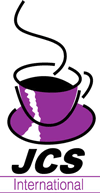
J2EE Technology Overview
23-24 March 2004 (14-21)
Location: Business Faculty Brussel (Neder-over-Heembeek)
Presented in English by
Price: 920 EUR (excl. 21% VAT)

This event is history, please check out the List of Upcoming Seminars, or send us an email
Learning Objectives
During this seminar, we offer you a complete overview of the basic architecture of J2EE as well as an in-depth description of all the components of the Java 2 Enterprise Edition. Participants will learn the purpose and significance of J2EE, but also insight in which development skills are required, and how the development process should be organized.
This seminar starts with a review of the J2EE architecture, but the main part of this seminar consists of a description of all the J2EE technologies: Java Naming and Directory Interface (JNDI) for directory-based applications, Servlets, JavaServer Pages (JSP), Tag Libraries, Java Messaging Service (JMS) and JavaMail for messaging, RMI-IIOP for distributed applications, JavaIDL, JDBC for talking to databases, JTS/JTA for transactions, JCA for connecting to legacy systems, the Java API's for XML (JAXPack) for XML-based applications, Enterprise Java Beans (EJB) for reuse, ...
Furthermore, we will discuss a number of typical architectures and typical solutions, which are becoming more and more popular as the 'J2EE blueprints', best practices and design patterns.
We finish this two-day seminar with a discussion of the available tools for J2EE development and deployment, and a brief comparison of J2EE and .NET.
Purpose of this seminar
- Presents an overview of the Java 2 platform
- Describes the main J2EE architectural elements (components, containers, and connectors)
- Defines the role of EJB in J2EE - so that you know if you have to use it, or can avoid it ...
- Explains the benefits of using standard J2EE component technology with off-the- shelf applications and Web servers
- Identifies some of the trade offs between using servlets as compared to JSP
- Describes how XML-based applications and Web services can be built using J2EE
- Explains how the messaging is done with J2EE
- Explains how the J2EE platform enables faster time-to-market e-commerce solutions for your organization and customers
Who should attend this seminar ?
This seminar is designed primarily for strategic planners, system architects, and technical decision makers in technology, tools and development standards. This course will also be of interest to corporate consultants and developers who want an up-to-date overview of the Java/J2EE technology that is available for building enterprise applications.
Full Programme
The programme is spread over two days (23 and 24 March 2004). Both days start at 14.00h and finish around 21.00h, with a coffee/tea break around 15.30h, and a dinner around 17h30.
Part 1: Introduction to the Java 2 Platform, Enterprise Edition, Framework
- The vision, features and advantages of Java
- N-tier systems, problems, and benefits
- A brief overview of the technologies provided in J2EE, and an overview of the seminar
Part 2: Typical J2EE Architectures
- Examples of real-world Java architectures and case studies
- The Application Programming Model of J2EE
- Implementation strategies
- The phases and roles in J2EE application development
Part 3: JNDI: Java Naming and Directory Interface
- Distributed objects, naming, ... in Java applicaties
- How is JNDI used in real-world situations ?
Part 4: Servlets, JavaServer Pages (JSPs) and Tag Libraries
- What are servlets ?
- What is the lifecycle of a servlet ?
- What are JSPs ?
- How are JSPs used ?
- How can tag libraries be used to reduce scriptlet code in JSP pages ?
Part 5: JavaMail and JMS
- What is JavaMail, and how do we send messages ?
- What is Java Messaging Service (JMS) ?
- How does a JMS applicatie look like ?
- The 2 messaging styles in JMS
Part 6: RMI-IIOP and JavaIDL
- How do you implement RMI remote objects in Java ?
- How can RMI-IIOP be used to communicate with CORBA objects ?
Part 7: JDBC and JTS/JTA
- The advantages of JDBC
- The architecture of JDBC applications
- Transactions, types of transacties, and how they are implemented in J2EE
- Bean-managed versus container-managed transactions
Part 8: EJB: Enterprise JavaBeans
- What are Enterprise JavaBeans ?
- Development roles in EJB
- Entity beans versus session beans
- Deployment descriptors
- How are communications and transactions handled in EJB ?
Part 9: JCA: The J2EE Connector Architecture
- JCA: the J2EE Connector Architecture
- Interfacing with legacy and other systems
- JCA: a market overview
Part 10: Typical J2EE Problems and their Solution: J2EE Design Patterns
- J2EE best practices
- The challenges of large applications and projects
- Architectural patterns, design patterns and the J2EE Blueprints
Part 11: Market Overview of J2EE Application Servers and a Brief Comparison with Microsoft's .NET
- An overview of J2EE-based tools such as app servers
- The future of J2EE
- How to start small with J2EE development, and how to grow your development environment, your toolbox and your team ?
- Main differentiators between J2EE and Microsoft's .NET
Speakers

Bart Strubbe is a Certified Java Engineer at JCS Int., with a lot of experience with J2EE. JCS is an Authorized Java Center that offers consultancy and development, and exclusively focuses on Java and related API's.

Ronny Van de Maele is Sales Manager at JCS Int., with a good overview of the J2EE market (application servers, development tools, company strategies, ...).
Questions about this ? Interested but you can't attend ? Send us an email !